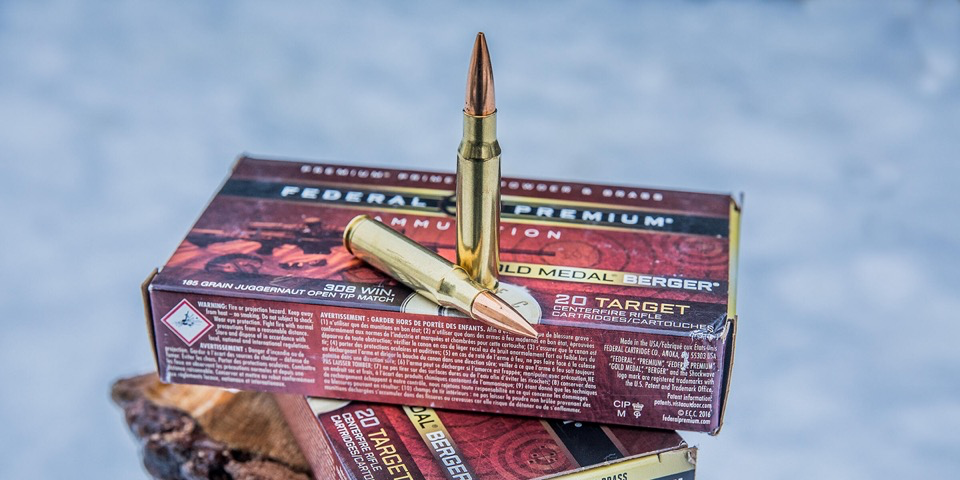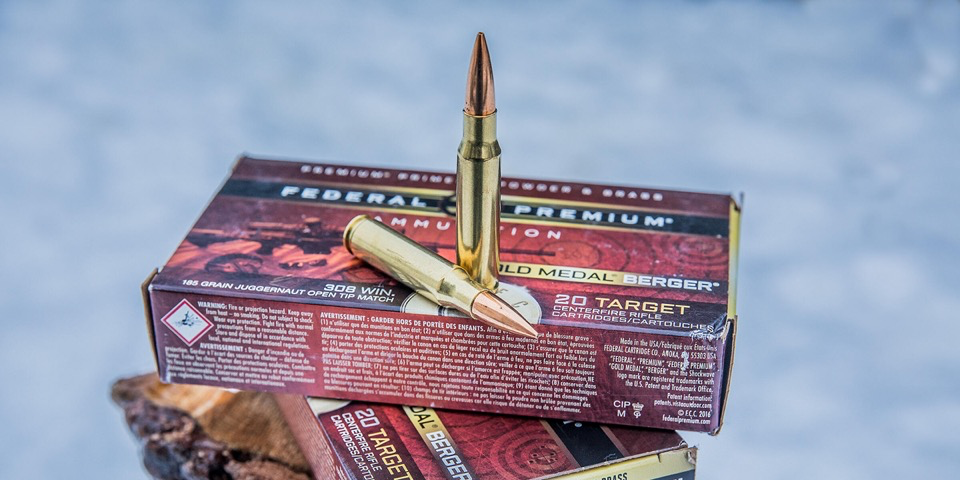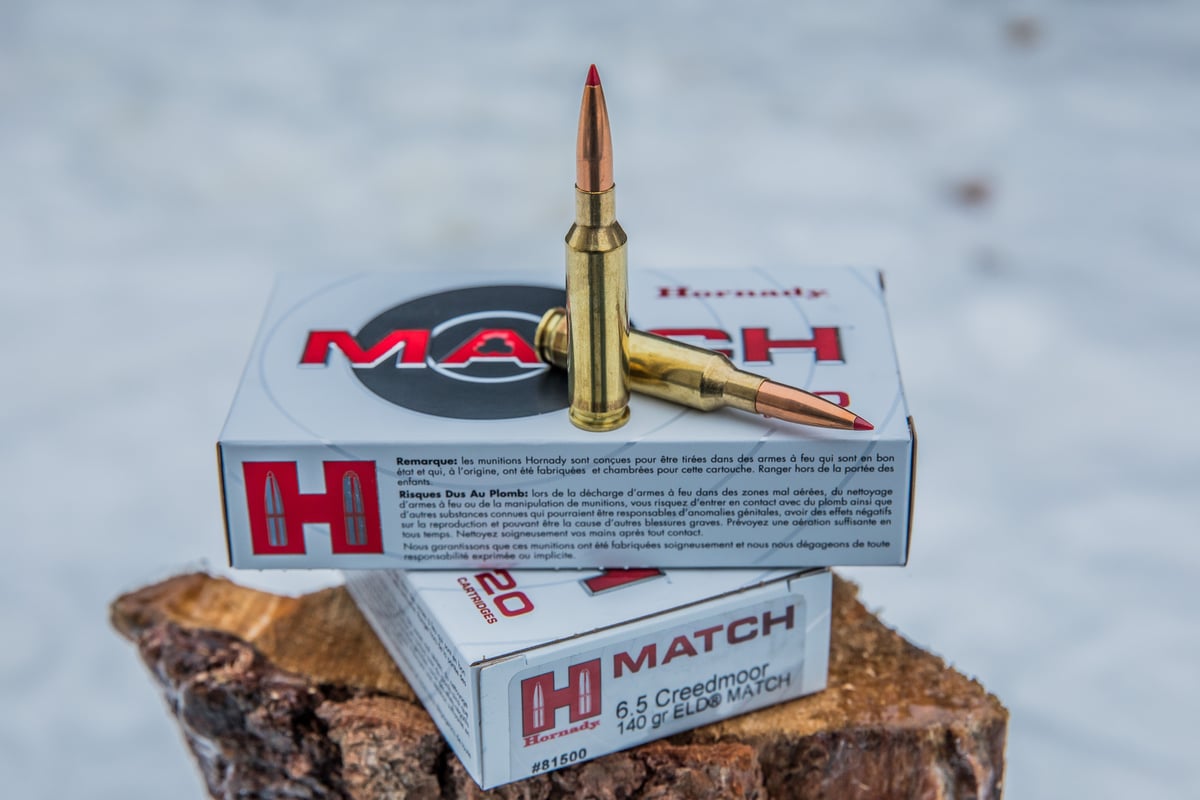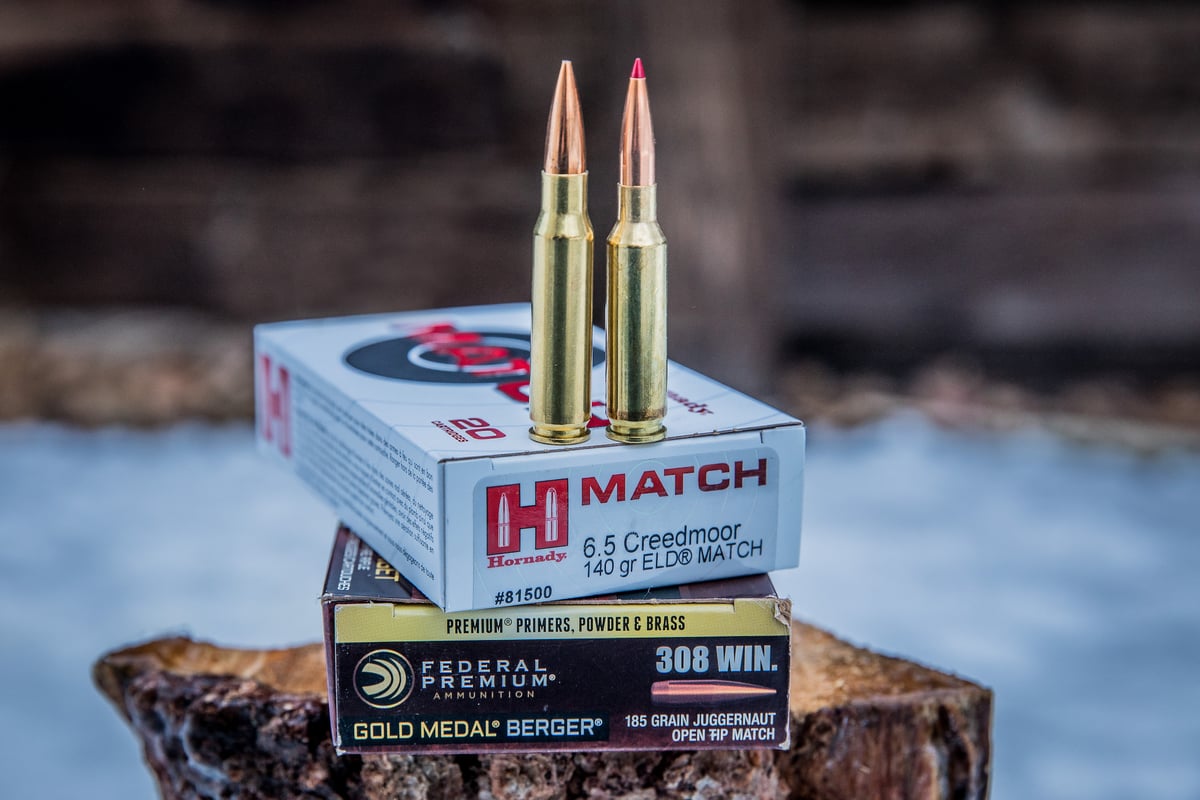
When it comes to American big-game hunting rounds, the .30-caliber cartridges have always played a dominant role—.30-06, .300 Win. Mag., and perhaps the most versatile and popular of all, the .308 Win. Originally designed for the military as a replacement for the .30-06, the 7.62x51mm NATO offered soldiers the ability to carry less weight with the same amount of ammunition, in a short-action rifle. In 1952, the cartridge was introduced as a sporting round, with the .308 namesake, and the U.S. military made it the official rifle cartridge in 1954.

In terms of performance, the .308 is virtually identical to the .30-06 and was an improvement over another popular cartridge at the time, the .300 Savage. It is viewed as an adequate big game hunting round for nearly every game animal in North America, though it is probably not the ideal choice for moose or, more particularly, brown bear. It is available in bolt-action and semi-auto platforms and is a staple among long-range shooters.
But how does it stack up against the newer and wildly popular 6.5 Creedmoor? For whatever reason, the 6.5s have always been a popular European cartridge, especially the 6.5x55mm Swedish Mauser, or Swede, but have not traditionally been as popular Stateside. Much of that has to do with the metric designation, something Americans long ago refused to accept. Other cartridges, like the .260 Rem., 6.5 SAUM, and 6.5-284 Norma, have been popular among long-range shooters, but never hit it big in the mainstream. Everything changed with the introduction of the 6.5 Creedmoor in 2007, which has quickly become one of the hottest chamberings in the firearms industry.
The 6.5 Creedmoor is an offspring and modification of the .30 T/C, which itself was based on the .300 Savage. The beauty of the cartridge is that it allows for longer, leaner bullets with high BCs to be seated in a short-action case. Those bullets tend to fly better in the wind, with less drop, especially at great distances. And all this from a cartridge that produces very little recoil, is highly efficient, and inherently accurate.
Which is Better?
The great question is, which cartridge is better? To help answer that question, let’s first consider the hunting world and average shots on the most game within 300 yards. For the sake of comparison, I’ll use Hornady’s Four-Degrees-of-Freedom (4DOF) ballistic app and loads from the ELD Match (ELD-M) line. For rifles, we’ll use Mossberg’s Patriot Revere, which features a 24-inch barrel, with a 100-yard zero.

While BCs aren’t quite as good as the 6.5, the .308 is still an incredibly accurate round, particularly when loaded with long bullets like the 185-grain Berger OTM.
At 300 yards with a Patriot Revere rifle in 6.5 Creedmoor and 147-grain ELD-M bullet, there is approximately 3.59 MOA of elevation adjustment, and with a 10 mph right to left wind, 1.30 MOA of windage adjustment. At 300 yards, the 147-grain projectile retains 1,746 ft.-lbs. of energy.
The next closest bullet in the ELD-M line for the .308 is the 155-grain, which at 300 yards with the same 10 mph wind has a come up of 3.10 MOA and a windage adjustment of 1.30 MOA. At that distance, the .308 carries 2,026 ft.-lbs. of energy.
What does the data show us? First, the .308, at 300 yards, carries more energy than the 6.5 Creedmoor by 280 ft.-lbs. More energy on target is ideal, especially when hunting larger-bodied games. We’ll call that a slight win for the .308. Second, windage is identical at 300 yards, so there’s no clear winner at that distance. Based on the data, the cartridges are almost equal at 300 yards, but the 155-grain ELD-M drops slightly less and carries more energy. If there is a winner, it’s the .308, and just barely.
The Long Game
Let’s look at the same 4DOF data at 1,000 yards. The 6.5 Creedmoor has 27.60 MOA of come up, with 5.52 MOA for the same right-to-left, 10-mph, 90-degree wind. The .308 has 31.24 MOA of elevation adjustment, with 8.46 MOA of windage. The 6.5 has 769 ft.-lbs. of energy left, and the .308 has 651 ft.-lbs. It becomes quickly obvious that the 6.5 becomes much greater in ballistic performance the farther you go out, pulling away from the .308 like Usain Bolt at the end of a footrace.

Hornady offers the ELD-M in several bullet sizes, including 140-grain in 6.5 Creedmoor. Developed by Hornady in 2007, the 6.5 is available in everything from match to hunting bullets and offers extremely high BCs with impressive long-range accuracy.
Not only does the 6.5 have significantly less drop at 1,000 yards, but it’s also far better at dealing with wind. That’s what those exceptionally long, slender bullets will do for you, and why long-range shooters often prefer the 6.5. It’s in the long-range game that the 6.5 proves itself as the clear winner.
Settling the Debate
So often, debates rage because there isn’t a clear winner or loser. That’s certainly the case with the head-to-head comparison between the .308 and 6.5 Creedmoor. Selecting a “better” cartridge largely depends on what your intended purpose is. If you’re banging steel at 1,200 yards, the 6.5 is a better choice. At reasonable hunting ranges—let’s be honest, for most shooters that’s inside 300 yards—the .308 carries a slight edge in energy, and more so if you go with a heavier bullet. But even then, it’s a close battle between two stellar cartridges.

Federal Premium’s 185-grain Gold Medal Berger in .308, left, and Hornady’s 140-grain ELD-M in 6.5 Creedmoor, right. The beauty of both cartridges is the wide availability of long-range match ammo.
Platform Matters
Equally important in the discussion, particularly for those with long-range aspirations, is the platform you intend to use. If you’re planning on hunting mule deer in the West and shooting at an ethical range, Mossberg’s Patriot Revere is a first-rate choice. Not only does the European Premiere Walnut stock feel right at home in the West, but it also features a Lightning Bolt-Action (LBA) trigger to ensure consistent accuracy. At only 7 pounds, it’s available in either cartridge, .308 or 6.5.
For those looking to tackle the 1,000-yard barrier, Mossberg’s MVP Precision Rifle is going to be the ticket. Much heavier at 9.5-10 pounds (depending on caliber), the MVP Precision Rifle is available in, you guessed it, .308 or 6.5 Creedmoor. The chassis platform accepts Magpul-style magazines, while the forend features M-Lok attachment points. The buttstock is a Luth-AR 3-way adjustable, making it ideal for long-range fine-tuning.
No matter which cartridge you opt with, the great news is there’s no wrong choice. Both are capable at close or long-range, so long as you put in the work behind your rifle.
Mossberg Patriot Revere
About the Author





